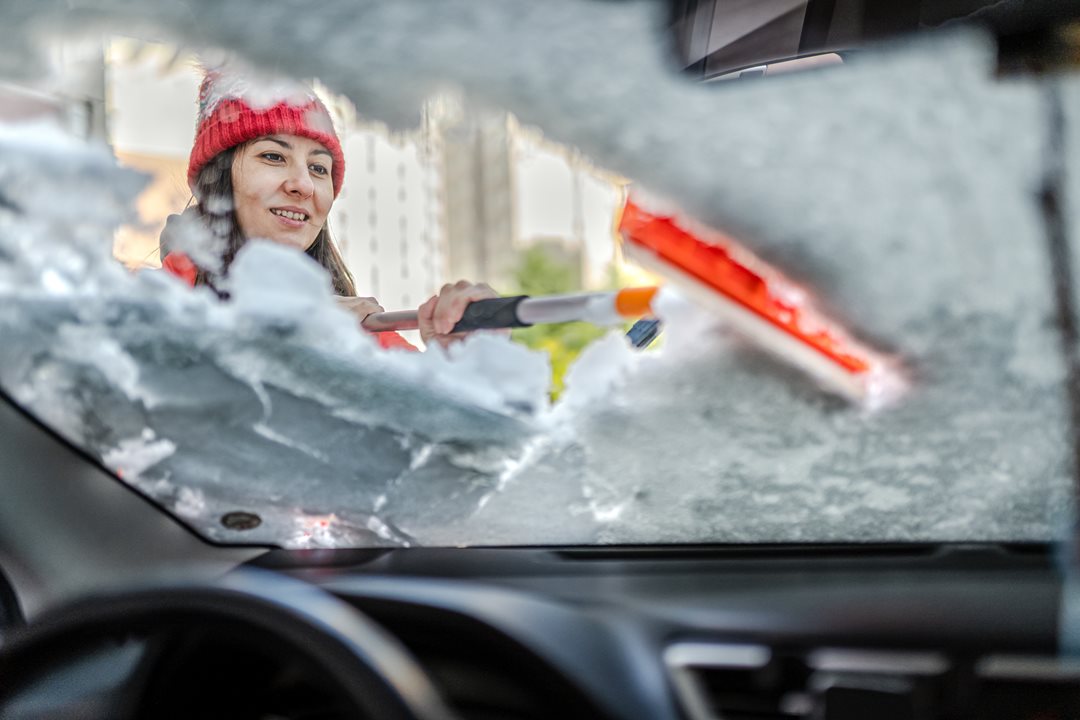Four winter driving tips you don't want to forget | PEMCO
 When it comes to icy winter driving, most Pacific Northwesterners are, well, chill. That’s according to our latest PEMCO Poll that shows self-assured snow drivers outnumber their white-knuckled neighbors by nearly 2:1.
When it comes to icy winter driving, most Pacific Northwesterners are, well, chill. That’s according to our latest PEMCO Poll that shows self-assured snow drivers outnumber their white-knuckled neighbors by nearly 2:1.
Could a love of prevention help explain their confidence? We think so! You can reduce your risk of an accident and boost your peace of mind with a few important changes in how you drive and prepare your car.
Four tips to help you skip the skid
Safer winter driving isn't about eliminating all risks, except when conditions are so dicey you shouldn’t be on the road at all. Instead, it’s about controlling what you can:
-
See snow? Think s-l-o-w. Posted speed limits are meant for optimal driving conditions. They’re too fast, though, for snow, ice, hail, fog, or even heavy rain. That’s because it takes longer to slow down, stop, or safely turn on slick surfaces – even if you drive a 4x4 or all-wheel-drive car.
If your car starts to slide, that’s a red flag to slow down, but resist the urge to jump on the brakes. Hard braking or swerving will make things worse. Instead, ease off the accelerator or brake and gently steer your car in the direction you want to go (sometimes you hear it called “steering into a skid”). For example, if you feel your rear tires sliding to the right, which pushes the front of the car to the left, steer right to straighten the car. Once the car starts to respond and the front is almost centered again, gently straighten the wheel so you don’t overcorrect and send the car sliding in the other direction.
If you hit a patch of black ice, the best thing to do may be nothing at all. Unlike frosty glare ice, black ice looks wet (keep your headlights on to help spot it) and often occurs in short patches of 20 feet or less. Take your foot off the accelerator, hold the steering wheel straight, and let your car coast over the patch. Keep cruise control off during freezing weather.
-
Build a bigger ‘space bubble.’ Double or even triple your following distance on slick roads. Instead of the usual two-second rule, make it five or six. That added distance gives you more time to react to road conditions and other drivers’ mistakes. Choose the clearest lane (likely the one most recently plowed or most heavily traveled) and stick to it.
If you approach a traffic light on a hill, time your ascent so you won’t get stopped at a red light. You’re less likely to lose traction when you keep a controlled steady speed (not too fast or slow) from bottom to top. Plan your route to avoid snowy hills if you can.
If you park on even a slight incline, turn the steering wheel to brace your tire against the curb so your car can’t slide down the hill once you walk away. -
See and be seen. In a world of white, don’t let your car be just another blob in the landscape. Brush off headlights, taillights, and turn signals, and make sure they’re working. Also clear off your roof, hood, and trunk so you don’t clobber another vehicle with a “snow slab” that breaks loose.
Scrape and defrost all windows (a porthole isn’t enough!) and side mirrors. Both Washington and Oregon require windshields to be free of nontransparent material, which includes snow and ice. Check out these dos and don’ts for clearing off your car.
Keep reflective triangles or flares in your vehicle in case of a stall or accident. Put them out to reduce the chance that oncoming drivers could run into your stopped car. -
Top your tanks, test your tires. Your car needs extra love this time of year. Don’t let the gas gauge drop below half in case you get stuck in a snow-snarled commute. Check your tire pressures (they can drop in the cold), top off window washer fluid, replace worn wiper blades, and ask your mechanic to test your antifreeze levels and battery’s charge (cold temperatures can sap an already weakened battery, leaving you unable to start). If you drive an EV, keep an eye on the charge. When it’s cold, EVs consume extra energy to heat the cabin and battery, reducing range. They also may take longer to charge when it’s cold.
Besides the emergency kit you keep in your car year-round, winter driving requires a few important extras, including an ice scraper, small shovel, and snow brush; old-fashioned, non-clumping cat litter you can sprinkle for added traction if you get stuck; chains fitted for your vehicle (here’s more on when you need them); and a blanket or sleeping bag, water, and nonperishable food. Don’t forget boots, gloves, and a heavy coat in case you need to walk for help or put on chains
We’re here to help 24/7
Preventing the preventable paves the way for all the good that follows. But for those times when prevention isn’t enough, PEMCO’s all in to help because we’re all in on you. Report a claim 24 hours a day, seven days a week online or at 1-800-GO-PEMCO.
Safe travels, PNW!
Share on social media